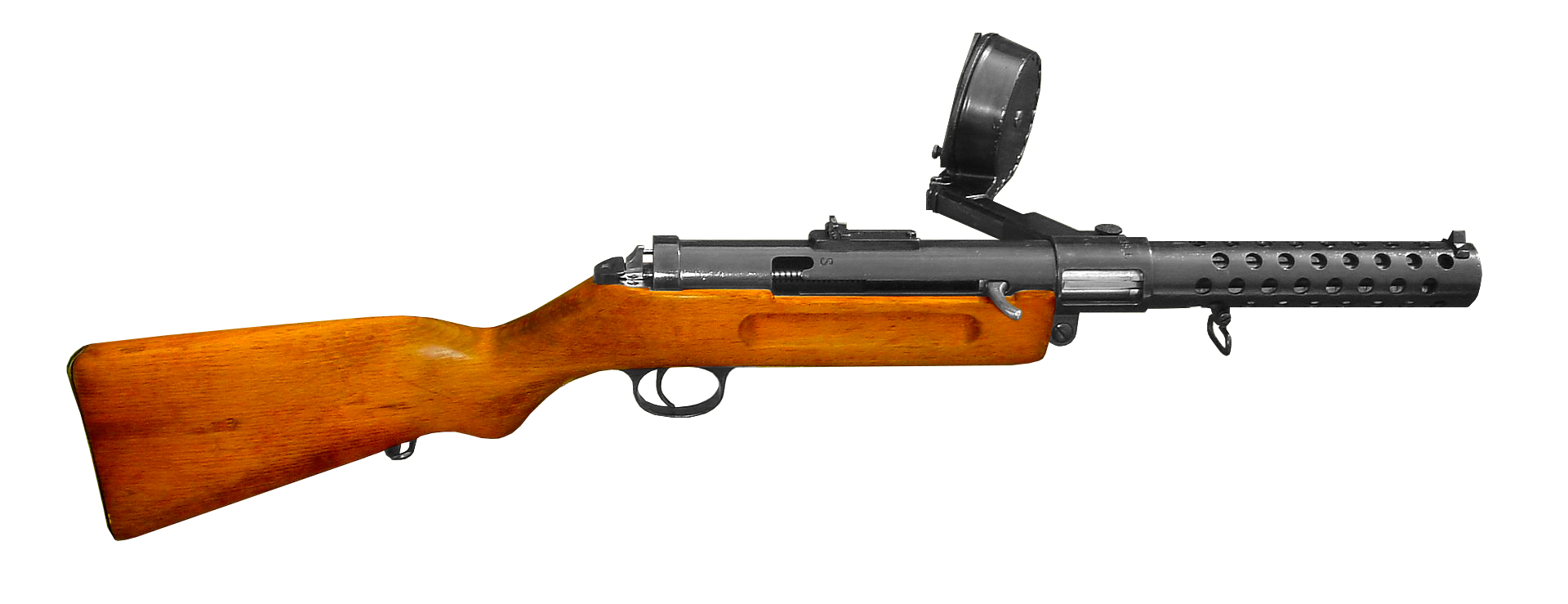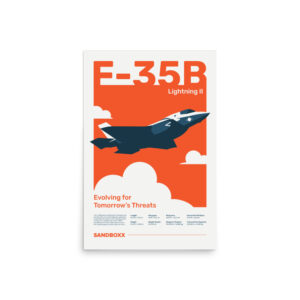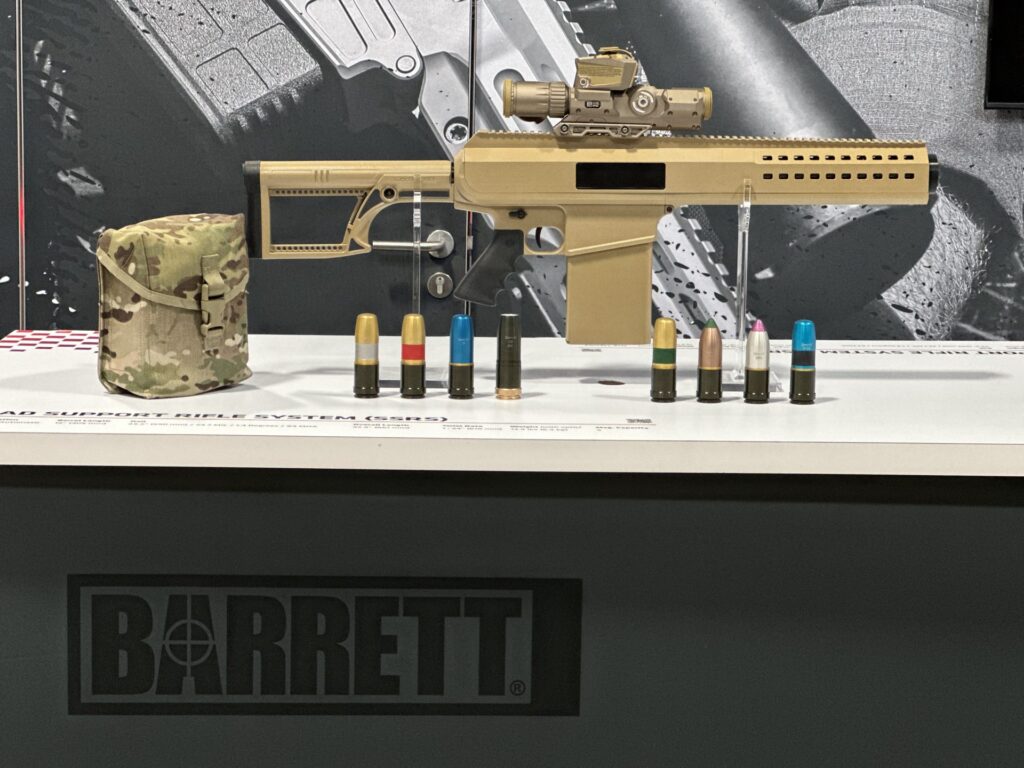The rise and fall of the submachine gun
- By Travis Pike
Share This Article

Submachine guns (SMGs) are an interesting category of weapons. They are typically defined as selective-fire weapons that feed from a removable magazine and fire a pistol round. Some countries do consider ultra-short carbines, like the AKS-74U, a submachine gun, but the generally accepted definition is a weapon that fires a pistol round. For decades the submachine gun ruled the battlefield, but as of late, these little guns have seen quite a decline in popularity.
Today we are going to explore the world of the submachine gun. The rise, the fall, and the current state of these pistol-caliber wunder guns.
The rise of the submachine gun
In World War I, the industrial revolution met the tactics of the previous generation. Most armed forces carried big, bulky, bolt-action rifles that were several feet in length. They were slow to fire and generally terrible for the close-range combat demanded by trench warfare.
Handguns were often the smaller, more portable choice, while machine guns and machine rifles were often seen as too bulky for trench warfare, and they often weighed tens of pounds. This led to the demand for something that combined a handgun and machine gun into one portable platform. Experimentation was done with machine pistols, but they were too tough to handle. This led to either the Germans or Italians creating the first submachine guns. (It’s debatable who created the first, but the Germans made the most use of them.)
Related: Why did Colt produce the M5 family of rifles?

Germany fielded the MP18 with their stormtroopers and found them to be a very successful fighting force. Germans and the SMGs were so capable that the Treaty of Versailles banned German forces from building SMGs after the war. Once the beast was out of the bag, a submachine gun revolution occurred.
The U.S. Army rushed to adopt its own submachine gun and the U.S. Marine Corps adopted the Thompson and found it to be an impressive weapon during the Banana Wars. In fact, the Marines discovered that a four-man team armed with Thompsons offered more firepower than a nine-man rifle squad.
Related: The trench guns of World War I
World War II – The submachine gun war

By World War II, the submachine gun had been firmly established, and countries that hadn’t already adopted one found themselves scrambling. The British, in particular, came up short and had to quickly mass produce the Sten gun.
Submachine guns offered troops and squads a portable source of firepower. Their small size allowed them to lay down suppressive fire alongside larger, heavier weapons like belt-fed machine guns and automatic rifles. These guns also offered a serious advantage in close-quarter combat. They were controllable and man-portable, as well as short and maneuverable.
After World War II, the world’s armories were beefed up with submachine guns. However, the world was slowly moving towards rifle designs that could replace the squad rifle, automatic rifles, and submachine guns. This led to battle rifles like the M-14 and FN FAL, as well as early assault rifles like the AK-47.
Related: The M45 Quadmount – The Krautmower weapon with the devastating power
The shift from frontline to special-purpose weapons
Eventually, by the time of the Vietnam War, weapons like the M-16 had completely overtaken SMGs as they combined a rifle, automatic rifle, and submachine gun all in one. Yet SMGs remained popular with special operations forces as they were often shorter than rifles and could be easily suppressed with subsonic ammunition.
So, SMGs became special-purpose weapons and the main arm of counterterrorism forces. They were light and easy to use for police forces and offered substantially more firepower than a handgun. If you had to clear a plane of hijackers, the SMG just made sense. American SWAT teams adopted these weapons en masse, and modern variants like the MP5 dominated the market.
The final fall of the SMG

While submachine guns offered more firepower than rifles, they were still just tossing pistol rounds. Rifles still offered much better penetration, armor-piercing capabilities, and the effects of tumbling and hydrostatic shock on a target. The military experimented with shorter rifles, eventually creating the M4 carbine and ensuring reliability with a newly designed gas system.
Other countries followed suit and rifles kept shrinking. Guns like the Mk 18 saw the M4 shrink even more, to the point where it wasn’t much bigger than your standard SMG. Unlike an SMG, the rifle was firing rifle rounds, which were considerably more capable. Around the world, we saw military forces producing and adopting short variants of their rifles.
This began edging out SMGs in counter-terrorism forces and among special operations. The super short carbines put the final nail in the coffin of the SMG. Military and police forces moved from the SMG to the short carbine and never looked back. Well almost.
Related: Morgan’s Riflemen – The difference a small elite unit makes
The current state of SMGs
Submachine guns aren’t fully dead, but they are very niche weapons. They have a role in close-quarters combat when something like a rifle can’t be wielded. SMGs with special operations have morphed into guns like the MP7, which serve as personal defense weapons. In some cases, someone, like a canine handler, needs a gun but also has to control their K9. The MP7, or a submachine gun, offers more firepower than a pistol but less weight and bulk than a rifle.
When concealment or a low profile is necessary extremely small submachine guns still have a role. The U.S. Army adopted the B&T APC9K for low-profile VIP protection, and it is small enough to be easily concealed and used in and out of a vehicle with ease. It can even be used one-handed if necessary.
SMGs aren’t fully dead, but they’ve been regulated to a very small niche within the military, and likely won’t break out of that niche anytime soon.
Feature Image: Portrait of a soldier from No. 3 Commando armed with a ‘Tommy gun’ and wearing a balaclava, at Largs in Scotland, 2 May 1942. (Photo by Lockeyear W T (Lt)/Imperial War Museums)
Read more from Sandboxx News
Related Posts
Sandboxx News Merch
-

F-35 ‘Evolution’ Poster
$22.00 – $28.00 Select options This product has multiple variants. The options may be chosen on the product page -

A-10 ‘Thunderbolt Power’ Framed Poster
$45.00 – $111.00 Select options This product has multiple variants. The options may be chosen on the product page

Travis Pike
Travis Pike is a former Marine Machine gunner who served with 2nd Bn 2nd Marines for 5 years. He deployed in 2009 to Afghanistan and again in 2011 with the 22nd MEU(SOC) during a record-setting 11 months at sea. He’s trained with the Romanian Army, the Spanish Marines, the Emirate Marines, and the Afghan National Army. He serves as an NRA certified pistol instructor and teaches concealed carry classes.
Related to: Gear & Tech, Military History

The Switchblade, loitering munitions, and the new terrifying face of warfare

5 ways to prepare and survive the Marine Corps boot camp

Barrett’s Squad Support Rifle System will make infantry squad deadlier
Sandboxx News
-

‘Sandboxx News’ Trucker Cap
$27.00 Select options This product has multiple variants. The options may be chosen on the product page -

‘AirPower’ Classic Hoodie
$46.00 – $48.00 Select options This product has multiple variants. The options may be chosen on the product page -

‘AirPower’ Golf Rope Hat
$31.00 Select options This product has multiple variants. The options may be chosen on the product page -

‘Sandboxx News’ Dad Hat
$27.00 Select options This product has multiple variants. The options may be chosen on the product page
